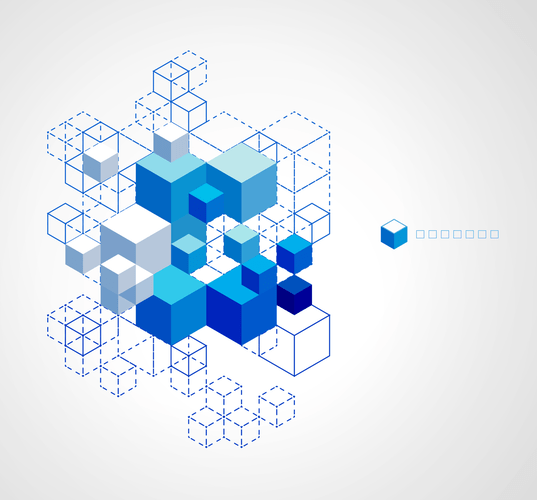The idea behind Flutter for app development is to help developers build beautiful, natively compiled mobile, web, and desktop applications using a single codebase. For this, the framework uses the Software development kit and widget-based UI library. The library consists of various reusable UI elements such as sliders, buttons, and text inputs.

Hot reload allows you to view any changes made in the code on emulators, simulators and hardware almost in real-time, with no need for app restarting. Unlike other frameworks that separate views, view controllers, layouts and other properties, widgets are the core of this technology. The mobile app SDK doesn’t use OEM widgets since it has ready-made widgets that look native to Android or iOS apps . Flutter has most definitely come a long way and we foresee it growing in the future. In its latest release, Flutter has moved support for developing Windows, Linux, macOS, and the web into stable channels. It is creating even wider opportunities for cross-platform consistency and savings by extending its cross platform support.
Running parallel code in Flutter has never been easy since the introduction of Dart 2.19
Which is basically a tool to build an app like you would build a lego house. The tool provides you with features you can mix and match to build your own app very quickly which can be extremely helpful in prototyping, MVP’s and user testing. However, the react native vs flutter purpose of this article is to enunciate the pros and cons of Flutter so here are the current limitations you could face during Flutter app development. Whether you need an android, iOS, or web app, Flutter gets the job done with just one codebase.
Flutter is ideally suited to creating a minimum viable product. The single largest drawback to developing with Flutter is that it’s still a relatively immature technology. Even in mobile development terms, https://www.globalcloudteam.com/ Flutter hasn’t been around for a very long time. These are aspects of app development that Flutter does better than the closest competing framework and things developers value highly as an internal asset.
What Does Flutter Do?
Applications created using Flutter, and packaged with its corresponding tools, are inherently larger than apps created natively. Even some competing frameworks can build comparable applications with a smaller footprint. The requirements to include the framework’s engine and widgets with apps means there’s more to package into applications. It’s this engine that supports the majority of Flutter’s unique functionality from rendering components within apps to the compilation toolchain that builds them. The engine effectively acts as a go-between from the Flutter framework to the underlying system—wrapping C++ code in Dart classes that can be exposed to the developer. Strictly speaking, Flutter isn’t a framework or library in isolation.
Many prominent companies have actually chosen Flutter for their branded mobile apps. Some examples are The New York Times, eBay, Groupon, Alibaba Group, Etsy, and Philips Hue just to name a few. This doesn’t mean that other cross-platform technologies become obsolete, though. After all, the nature of both Flutter and React Native allows to reduce time-to-market and makes developing mobile apps more efficient, which attracts increasingly more developers and app owners. It started as an open-source mobile UI framework that helped developers build native-looking Android and iOS apps.
Faster app development – hot reload feature
After that, other options, such as Xamarin and React Native, started to pop up. In 2017, Google released to the public its own open-source framework for creating multi-platform applications called Flutter. Flutter natively provides widgets based on the Dart intl package that simplifies this process. Today it supports 78 languages, as well as currencies, units of measure, dates, layout options , and more. Here’s a detailed guide on internationalizing your Flutter apps. Being an advocate for diversity and inclusivity, Google provides built-in opportunities to make your apps accessible to a wider range of people.
- For more information of Flutter on web and Flutter on desktop, check the official site.
- Flutter technology is almost the perfect toolkit for cross-platform development, making building iOS and Android apps more straightforward and faster.
- One such feature, “hot reload”, makes it possible to see the effects of small changes in code with near-instant “just in time” compilation.
- Flutter comes in quite handy as it is a cross-platform framework that you can effectively use for building apps that are as good as native apps.
- And as an interesting note, Google engineers developed the hot reload feature to increase their productivity.
If you want to build an app that works seamlessly on multiple platforms, then Flutter is the technology for you. However, there are plenty of Flutter pros and cons in 2022 to check out before you decide if it is the best platform for your mobile app. Based on the year-on-year growth of Flutter as an app development framework, it is evident that the SDK has more to offer.
Why Choose Flutter? Pros & Cons
Flutter gives developers a whole collection of UI elements that further speed up production. While ready-made UI components might affect branding opportunities, Flutter also lets devs customize each component, with platform-specific tweaks. A creative Flutter application that allows users to split expenses with friends and family members. The app keeps track of the expenses done by a group of people and deducts the money from their bank accounts. It helped in the creation of the app by creating a safe and easy to use platform. Users can easily save their bank card information, scan their receipts and much more with no extra fees.

This is thanks to the mobility of Dart and the flexibility of the Flutter framework. Because it is the same Flutter framework and the web is thought of as merely another device, you can compile your already existing Flutter code written in Dart into a web experience. Things such as third party packages and libraries play a big part in software development as they relieve the need to code everything from scratch. These libraries are mostly open source, pre tested and easily available. For other more mature and popular technologies, finding the needed package isn’t a problem, while for newer ones it is often an issue. As of today there are a great deal of packages on Flutter’s official resource and we expect that number to keep growing.
Which one to Use for Your Business: React Native or Flutter Development.
Here’s a look at how the number of questions about Flutter on StackOverflow has increased as compared to competitors. Compared to React Native, Flutter has a limited number of plugins and packages. This is to be expected for a framework that’s relatively new; the first stable version of Flutter was released on 4 December 2018. Almost everything in Flutter — from the layout, to colors, to text, to buttons — is essentially a widget, like components in React.

Flutter is perfect for MVP development due to the streamlined development process and straightforward testing. So for companies trying to get a product to market ahead of competitors or for startups to test the market, it’s a good choice. Another distinct attribute of Flutter is the use of native ARM binary which is compiled ahead of time , eliminating the need for JVM. In other words, it is fast since there are minimal performance issues that offer come up as a result of using a compiled programming language to serve as the JavaScript Bridge. The web support provided by Flutter is the same as the mobile experience. It is now possible to create apps for the web as well as for the iOS and Android ecosystems.
When You Need Your App Fast Or You’re Developing An MVP
One thing that is certain, though, is that Flutter app development is gaining traction. With popularity comes more momentum to continue to develop the framework. Currently, there’s a growing community of developers contributing to asset libraries and working out some of the problems. Flutter is Google’s cross-platform mobile development toolkit aimed at improving the efficiency, productivity, and reach of app developers. After it launched the alpha version in May 2017 and later with the stable version released in December 2018, it didn’t take long for Flutter to gain incredible popularity.